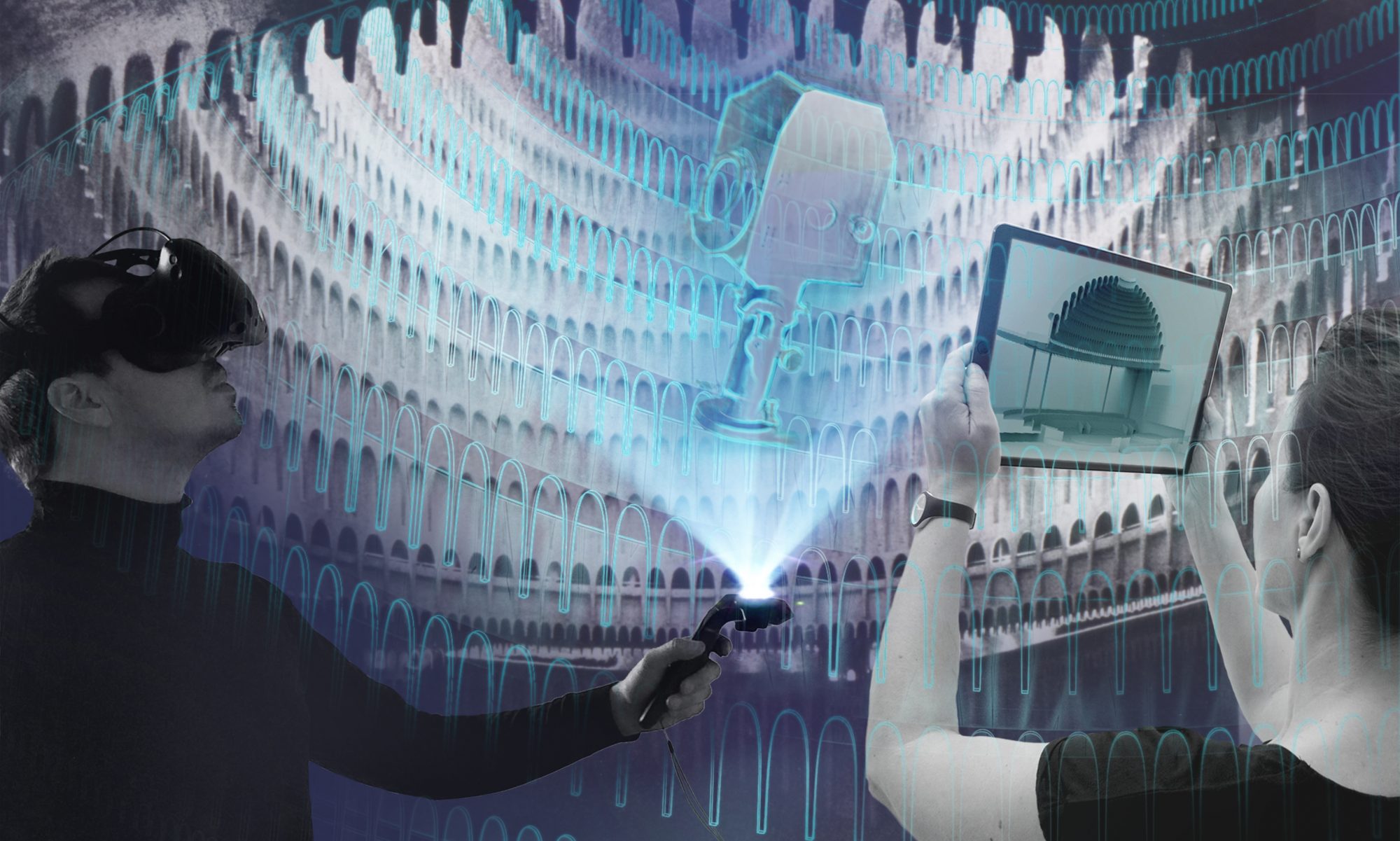Finally it’s time: Thanks to the support of the Federal Government Commissioner for Culture and the Media (BKM), our research project has started: With the title “Im/material Theatre Spaces – Augemted and Virtual Reality for Theatre”, we will dedicate the next two years under the direction of Franziska Ritter and Pablo Dornhege entirely to the questions of the entanglement of theatre and digitality.
How can stage sets be conceived virtually and how can new digital design methods be established in current theatre operations? How can digital technologies be used to ensure compliance with security industry standards? How can the future renovation process of a theatre building be discussed transparently and participatively with the public through an Augmented Reality application? How is the material cultural heritage made accessible to a broad public?
By the spring of this year, twenty international Creatives come together to find answers to these and similar questions. Within the framework of a workshop, seven concepts and their prototypical implementation were developed. These show how VR and AR can be used for architecture, stage design and theatre technology. Whether immersing oneself in past times, expanding physical space into the digital realm or overcoming gravity: the new technologies open up countless possibilities for participation, mediation and experience of im/material cultural heritage. The complexity of the workshop results made it clear that the exploration process of its potential has to be continued.
We are therefore very pleased that, on the initiative of DTHG Service GmbH under the direction of Hubert Eckart and Wesko Rohde, the foundation stone was laid for this comprehensive research project. Based on the workshop results, transferable sample solutions for technology, event security, architecture and stage design will be developed in the next two years in nine subprojects on the basis of concrete application examples.
All research findings are to benefit the entire theatre landscape: Our project is open source-based and uses transferable models.
Thus, the potential of the new technologies virtual and augmented reality can actually create added value for arts and culture.


